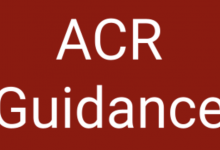Midlife Plateau Save
I like being in my 50’s as a rheumatologist. I’m at a stage in my career that I think I know where the potholes and blind alleys are and am comfortable enough in my own abilities to know when I’m out of my depth. I have hit a sweet-spot of sorts.
And yet, as I pass the midpoint in my professional career, I have a sense that I may have reached a plateau. Despite regular attendance at medical meetings and despite fulfilling regulatory requirements for our specialty, I’m not sure how much I learn that changes the way I practice medicine.
I was reassured to read that I’m in good company. Atul Gawande, surgeon and well-known author of the The Checklist Manifesto, seemed to reach a similar peak in his mid-40s. Writing about it in The New Yorker, he describes a levelling-off of what had been steady improvement in his surgical outcomes for years.
Noting the transformative effect that an hour with a tennis coach had on his tennis game, he began to wonder why doctors didn’t use coaches to ‘up their game’ in a medical setting.
So Gawande decided to get himself one. He invited a retired general surgeon under whom he had trained to come and spend a morning observing him and coaching him in theatre. The effect was transformative. The 20-minute feedback discussion they had at the end of his operating list gave Gawande “more to consider and work on” than he’d had in the previous five years.
If it’s good enough for Gawande, I thought…
So I recently persuaded a colleague to come and coach me. Hoping that he would tell me that I had already reached perfection (but also deep down fearing that I would be exposed as an out-of-date charlatan), I invited him to observe me for a morning in clinic. A full clinic load was scheduled and the patients were notified in advance that another doctor would be present. There would be no specific agenda — he would give me feedback on anything he thought worthwhile throughout the course of the day.
Throughout the day he remained largely silent, taking notes, occasionally approaching the examination couch to watch as I examined and performed procedures on my patients. This was the first time I had been observed in this way since I was a medical student. A little daunting, but after a while I largely forgot that he was there.
Then he gave me some feedback.
The Pause
I have become very skilled (like many of us) at ‘keeping things moving’ – As a result, I tend to leave almost no time for pause or reflection. Pauses, we agreed, allow us time to step back into ourselves, to try to re-gather a degree of objectivity after periods of more intense engagement during a consultation. Pauses also, of course, allow our patients time to gather their own thoughts and formulate questions.
Missed opportunities to do so included the potentially quiet moments while a patient dressed or undressed, during a physical exam, or while washing my hands.
Saving time
Additionally, whereas I always review patient notes immediately before I see them, this can be a slightly rushed affair when running behind. This results in an air of distractedness as I alternate my attention between my patient and the computerised medical record to double-check information. A suggestion to read through the notes of all patients before the clinic starts was made, allowing a more thorough assessment and freeing-up some time during the consultation.
Rheumatology Specific
I also received feedback on my examination technique, on my use of imaging (a tendency to over-rely on imaging findings in making certain diagnoses), my injection technique (“less stabbing, more distraction”), and the language I use to reassure patients (some patients require more of a ‘you will be fine’ approach than a ‘you’ll probably be okay’ one).
Here’s a few more (some evidence based, some just down to practical common sense):
-
Be very careful putting too emphasis on MRI’s interpretation of SIJs. Especially in older patients (OA).
-
Take a break from MTX inpatients with late onset nausea and then reintroduce very slowly.
-
Be careful assessing for inflammatory arthritis in the obese - chubby hands, elevated CRP due to increased BMI can give the appearance if inflammatory arthritis.
-
I have a tendency to put too much weight in the interpretation of joint tenderness in patients with inflammatory arthritis where there is also evidence of fibromyalgia.
-
In seronegative patients in remission for years always consider withdrawing DMARD.
-
Intramusclular IM steroid as effective as local thumb CMC injection for thumb CMC OA.
-
More emphasis on screening for CVS in inflammatory joint disease.
-
Encourage self efficacy more.
-
Ask every patient about mood and about exercise.
-
When it comes to joint injections I tend to inject very quickly (I am a ‘stabber’) but without much distraction technique. Distract patient with question during injection and slow down
-
Sometimes it's ok to do nothing.
-
Ask all patients about external stressors; Money, Marriage, Kids, work.
-
Less emphasis on physical therapy - more emphasis on social / group based exercise
We also discussed work-life balance, the redemptive powers of hard work, debt, death (ours) and planning for retirement.
It was hugely rewarding and fulfilling, a unique opportunity to get feedback from a peer and I’d be happy to recommend it.
Although at this stage of my career I’m not in this to win any competitions, it is still nice to aspire to an occasional personal best.
Anyone for tennis?
Thanks to Dr Maurice Barry, Rheumatologist in James Connolly Hospital, Dublin for his mentorship and to Atul Gawande for the idea.










If you are a health practitioner, you may Login/Register to comment.
Due to the nature of these comment forums, only health practitioners are allowed to comment at this time.